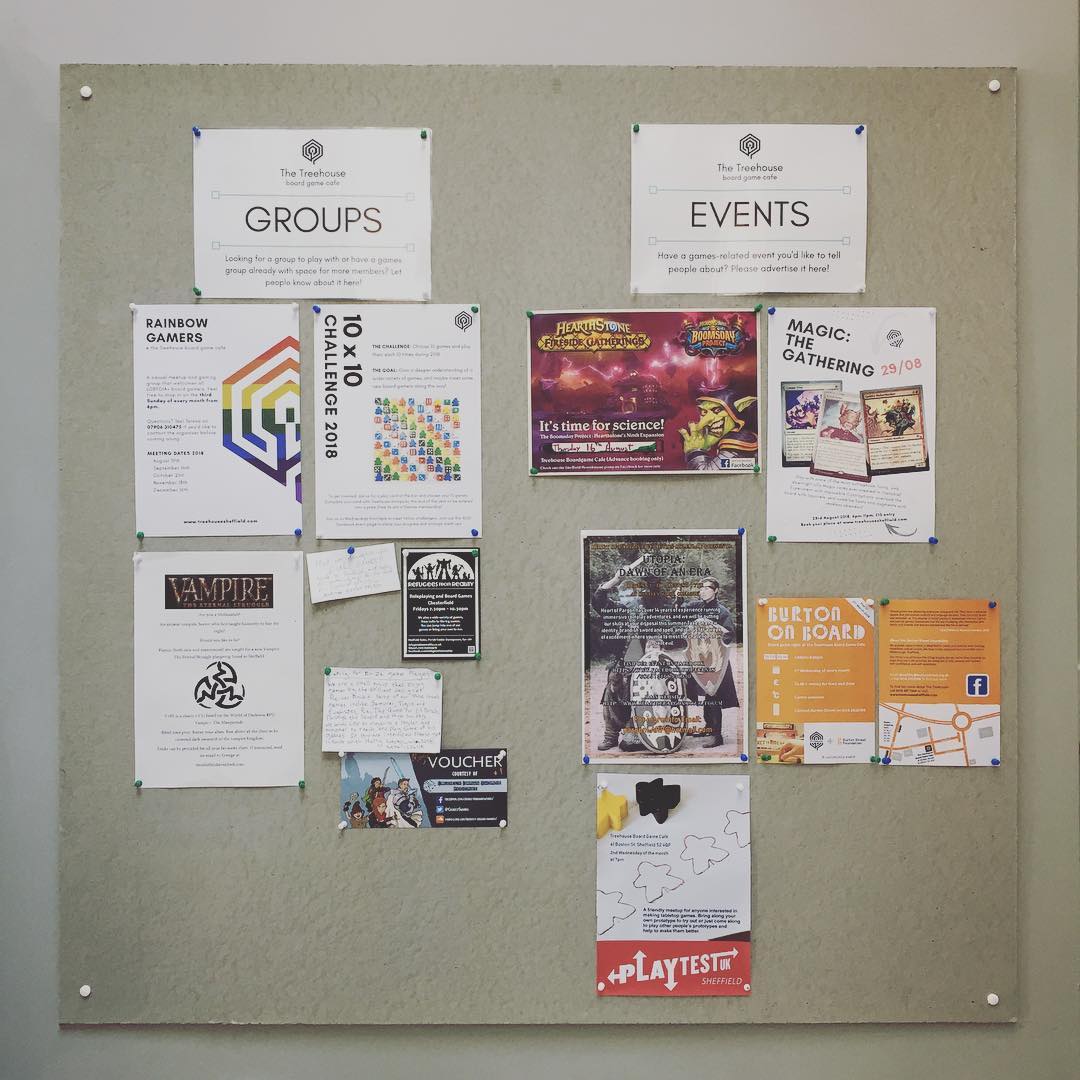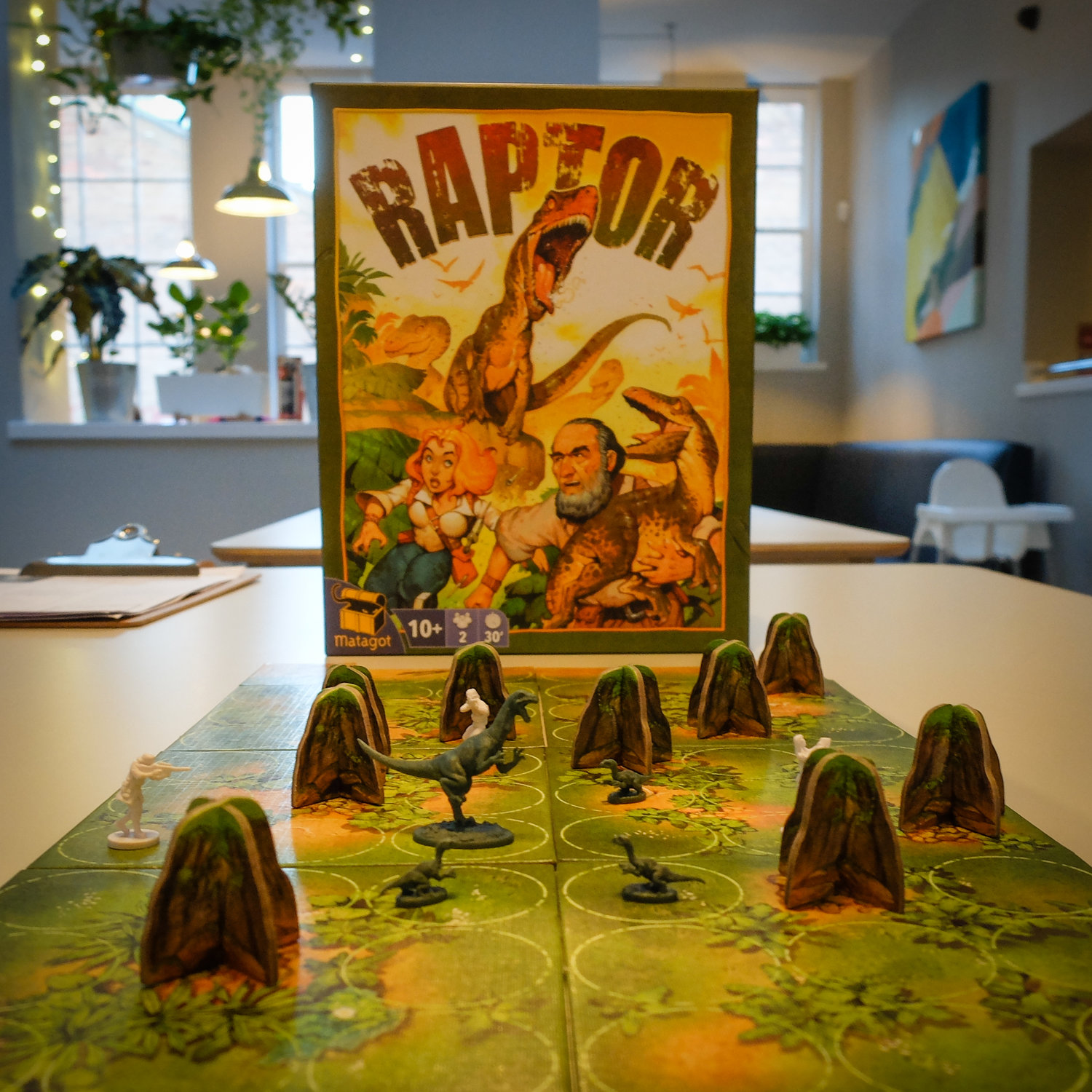Animal Upon Animal – If you want to ease your brain in gently or you’re simply in the mood for some good, old-fashioned fun, this is the game for you. Yes, it’s technically designed for small children and the components consist almost entirely of painted wooden animals, but that doesn’t stop it from being one of the most delightful games on our shelves. Basically reverse Jenga, Animal Upon Animal has a similar tension curve as the game progresses but is somehow much more forgiving, perhaps because with each successful move you’re left with a bigger and more awesome-looking animal tower! All the neighbouring tables will be jealous, take our word for it.
Quarto/ Pentago – These both fall firmly into the ‘abstract strategy’ category we touched on earlier, but are straightforward enough to feel like a gentle brain teaser (or gentle-ish, depending on how seriously you’re taking it and how clever your opponent is) rather than a full-blown strategic showdown. Quarto is the more sophisticated cousin of Connect-4, whilst Pentago is noughts and crosses with a (literal) twist. The two games have approximately six rules between them, but both have enough depth to get your brain ticking over and ready for whatever comes next…
Keeping things friendly
So now you’re all warmed up and ready for something with a bit more weight behind it, but you’re here to have a nice time together and want to leave on speaking terms. Here are our top choices for whiling away a companionable hour or so if you’d prefer to keep things friendly…
Patchwork – “A game of competitive quilting”. We usually open with this when we recommend Patchwork and watch the reaction, because those five words are often enough to either win someone over or put them off completely. If the description appeals, then you’re in for a treat, because as well as being about as endearing as it’s possible to be, Patchwork has enough depth to make for some really interesting decisions. On top of that, regardless of whether or not you win, you get the satisfaction of Tetrissing (yes, new word, we made it ourselves) together pieces to make your very own quilt and seeing it grow as the game goes on. Although it is a competitive game, it’s nigh-on impossible to play Patchwork aggressively, and the theme is just so soothing, so we’re pretty sure you’ll still be talking at the end. If you’re short on time, we’ve just got our hands on a copy of the newly-released Patchwork Express, which basically offers the same great game in under 20 minutes.
Jaipur – This one is a slightly harder sell for the uninitiated: players are traders in an Arabian market place, trying to win the approval of the Sultan by accumulating more goods and (mysteriously all-important) camels than the other player in each of three rounds. It looks and sounds very dry, but Jaipur consistently appears on top 10 lists of two-player games, and hopefully once you’ve played it you’ll understand why. Again, this is very much a Euro-style game in that there’s no direct conflict (although you might spot some opportunities to scupper your opponent’s plans if you keep a careful eye out). If you give it a go, keep an eye out for the special panda camel. We have no idea why it’s there, but we’re always pleased to see it!
Pandemic – If you’d prefer to remove the competitive aspect completely and work together against the game, there’s a whole world of cooperative games out there and pretty much all of them are great for two players. Pandemic helped to kickstart the whole genre when it appeared in 2008, and it has really stood the test of time. Players take on the role of a team of specialists trying to save humanity from four deadly viruses, racing against time to find the cures whilst travelling the world treating patients and trying to prevent outbreaks. The theme is so powerful that it’s impossible not to get drawn in, and it’s tricky enough to beat the game that you get to feel like heroes if you manage it, but will always have a memorable experience either way.
Head to head
Right. The gloves are off. You’re not here to mess around – there’s a score to settle. Here are our top games for times when taking part just won’t cut it.
Cobra Paw – Any game based around grabbing is guaranteed to get the competitive juices flowing, and Cobra Paw is simple enough to let you get stuck straight in. Take turns to roll a pair of dice, then look for the domino that features the two symbols they show amongst all of those on the table and try to get to it first. If you succeed, put the domino in front of you. If you can collect six of them you’ve won, but be warned: dominoes in front of other players are still fair game. Maybe move your drinks before you start playing!
Odin’s Ravens – This one doesn’t require physical speed to win, but involves a race nonetheless. Odin’s two ravens Hugin and Munin must fly around Midgard every day gathering information, and whoever gets back first to pass on their news first will be his good books. This is predominantly a card-based game with some beautiful artwork and component quality. Players discard cards to move their raven forward on a the track in the centre of the table, but can also invoke Loki to play tricks to speed their passage or slow down their opponent. A thoroughly thematic experience which always results in a nail-biting finale.







